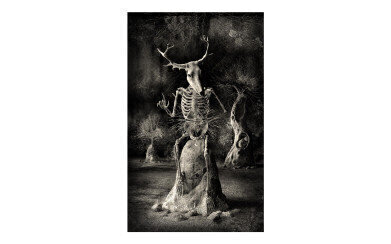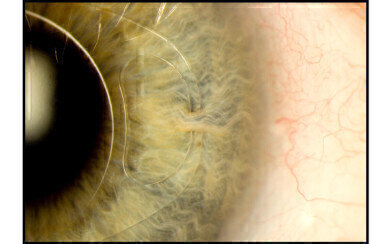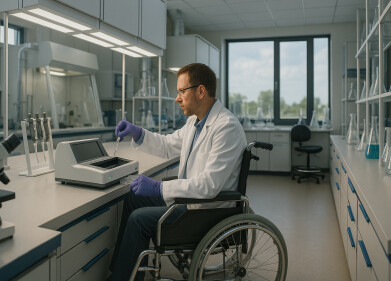-
 Stickman- Oliver Burston2017 wellcome Image Awards
Stickman- Oliver Burston2017 wellcome Image Awards -
 Intraocular lens 'iris clip' - Mark Bartley/2017 Wellcome Image Awards
Intraocular lens 'iris clip' - Mark Bartley/2017 Wellcome Image Awards
News
Wellcome Image Awards Reflect Stunning Science
Mar 24 2017
Depicting some of the most eye-catching celebration of science, medicine and life, the 2017 Wellcome Image Awards now in its 20th year, recognises the creators of informative, striking and technically excellent images that communicate significant aspects of healthcare and biomedical science. The judges are experts from medical science and science communication. This year's Wellcome Image Awards were presented on 15 March 2017, celebrating the scientists, clinicians, photographers and artists who bring science to life through remarkable imaging. More images will be shown in following issues.
Established in 1997, the Wellcome Image Awards reward and showcase the best in science image making – and this year’s 22 winning images represent a broad spectrum of techniques and specialisms.
Stickman – The Vicissitudes of Crohn’s (Resolution)’ portraying a personal experience of Crohn’s disease is the overall winner of the Wellcome Image Awards 2017. It is a striking computer-generated image which conveys the physical and emotional experience of Crohn’s disease, a chronic condition caused by inflammation of the digestive system. It depicts the weight loss, frailty and abrupt, transformative nature of Crohn’s. It is part of a series incorporating Stickman, the alter ego of illustrator Spooky Pooka, Oliver Burston, who has the disease. Fergus Walsh, BBC Medical Correspondent and a member of the judging panel, said: "This image is a stunning representation of what it must be like to have Crohn’s disease. It’s like nothing I’ve seen before in terms of the portrayal of someone’s condition: it conveys the pain and torment the sufferer must go through. The image really resonates and is beautifully composed: it’s a haunting piece."
Intraocular lens ‘iris clip’ - This photograph of the human eye by Mark Bartley, Cambridge University Hospitals NHS Foundation Trust, shows a surgically implanted structure that can correct or restore vision. Different types of intraocular lenses can be used to tackle different conditions such as short-sightedness and even cataracts. This image was the winner of the Julie Dorrington Award for outstanding photography in a clinical environment. Mark’s detailed, close-up picture shows how an iris clip, used to treat near-sightedness and cataracts, is fitted to the eye. Mark is the second person to win the award. Catherine Draycott, Head of Wellcome Images and Chair of the judges, said: "This extreme close-up shows the expertise of the clinical photographer in illustrating with such clarity and precision this minuscule lens that, clipped by a surgeon into the human iris itself, can restore a patient’s vision."
To view all images visit www.wellcomeimageawards.org
Digital Edition
Lab Asia Dec 2025
December 2025
Chromatography Articles- Cutting-edge sample preparation tools help laboratories to stay ahead of the curveMass Spectrometry & Spectroscopy Articles- Unlocking the complexity of metabolomics: Pushi...
View all digital editions
Events
Jan 21 2026 Tokyo, Japan
Jan 28 2026 Tokyo, Japan
Jan 29 2026 New Delhi, India
Feb 07 2026 Boston, MA, USA
Asia Pharma Expo/Asia Lab Expo
Feb 12 2026 Dhaka, Bangladesh


















